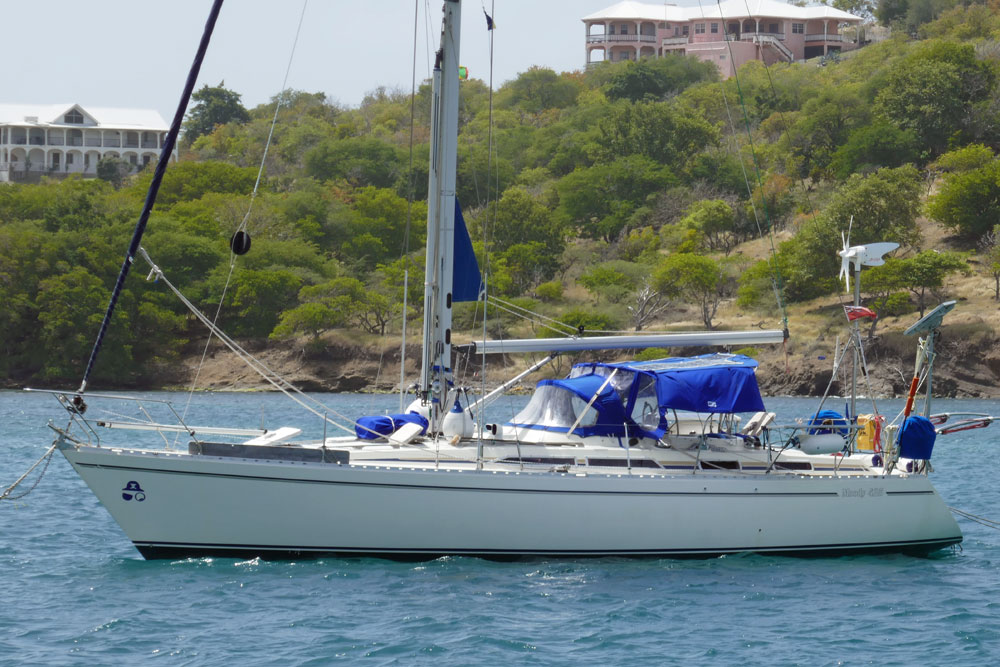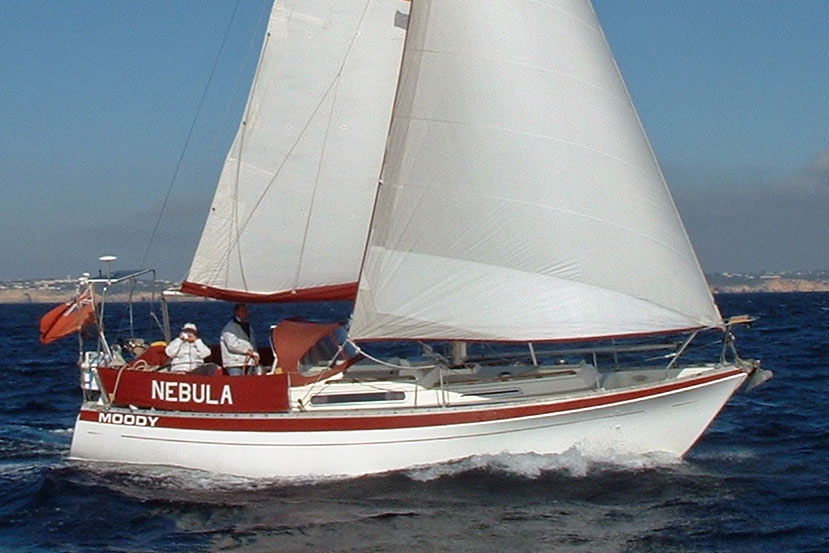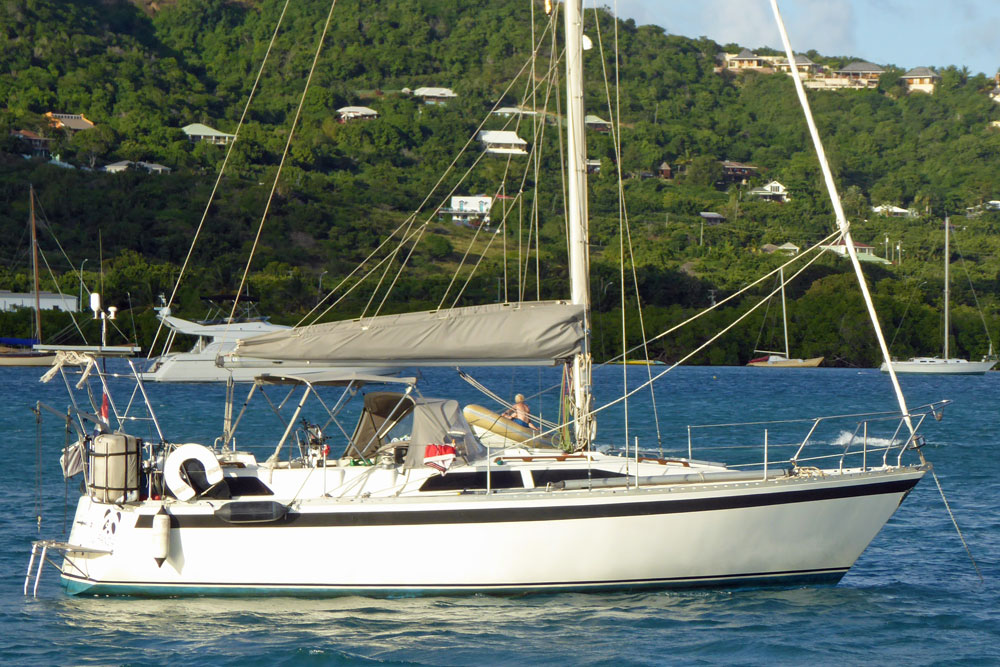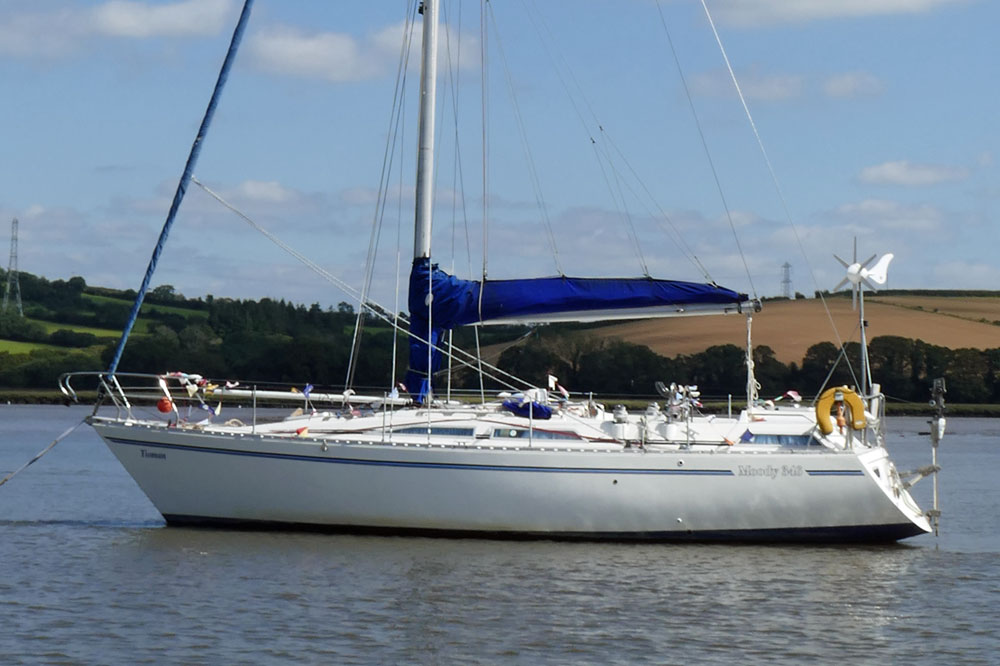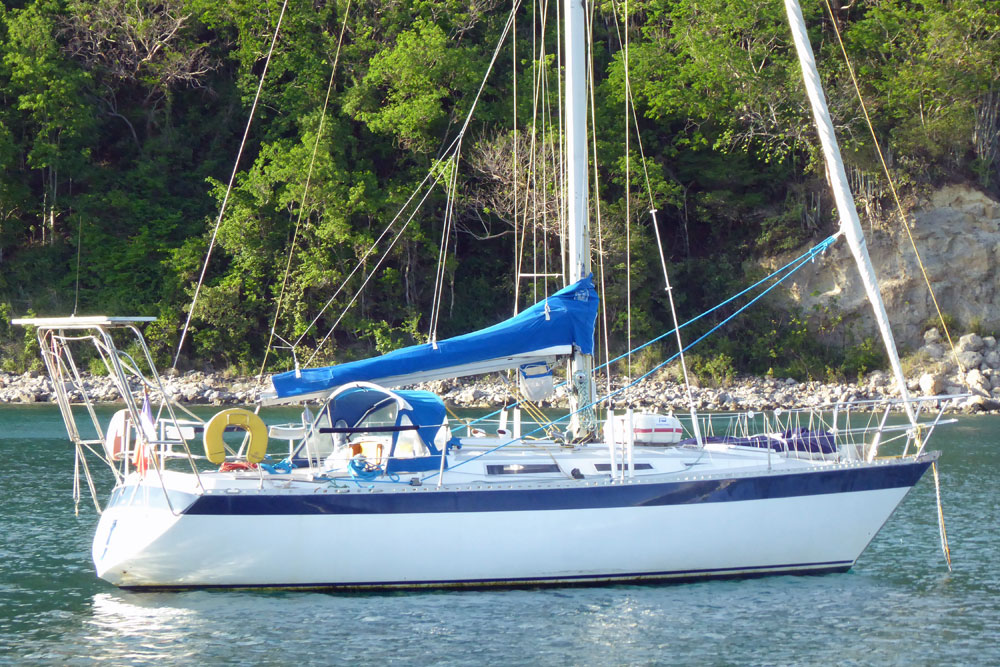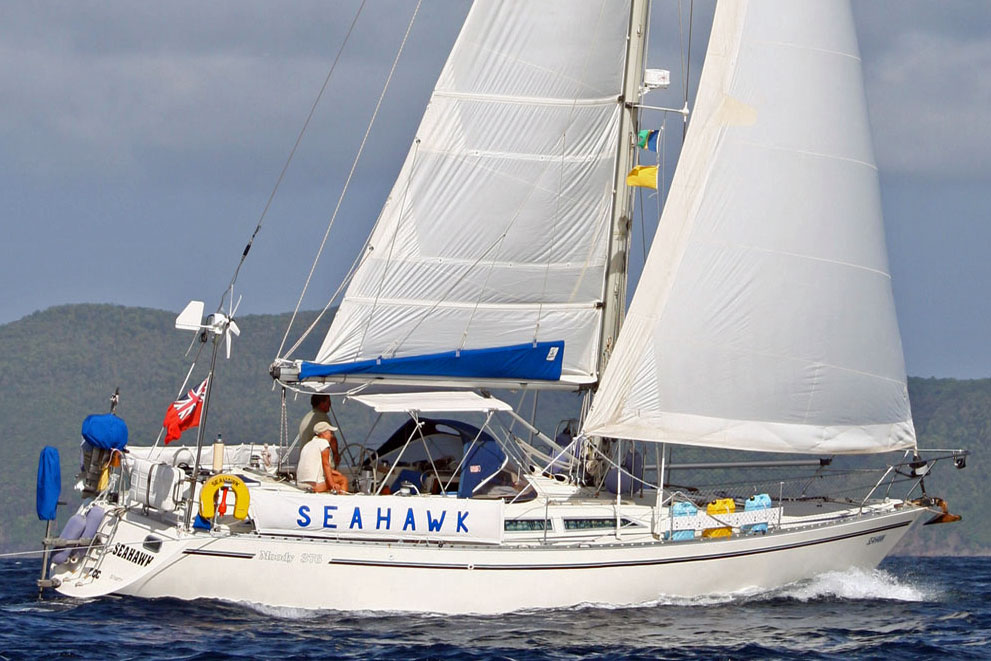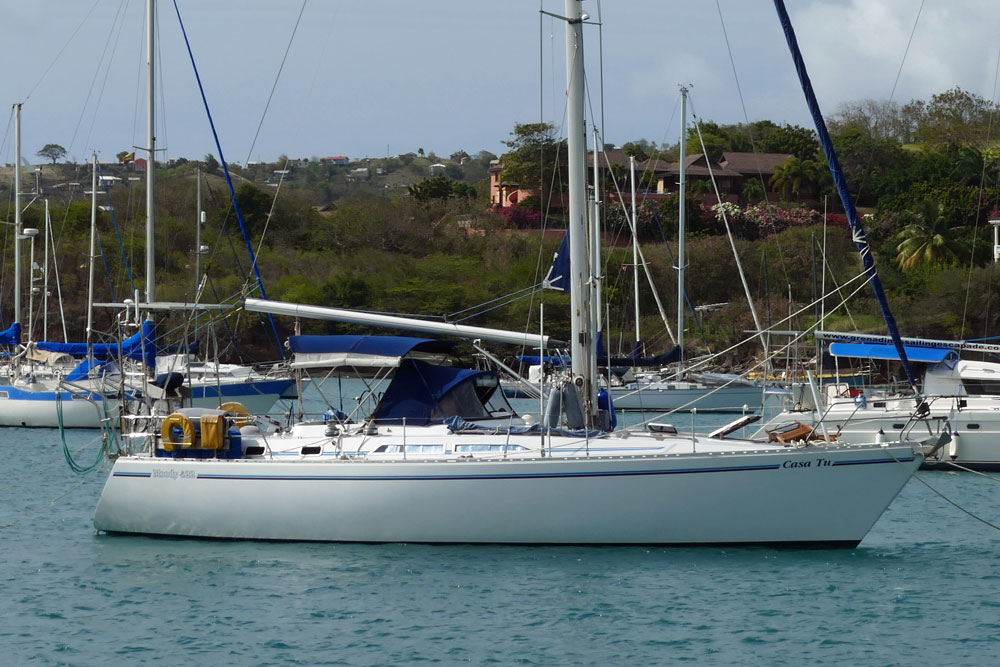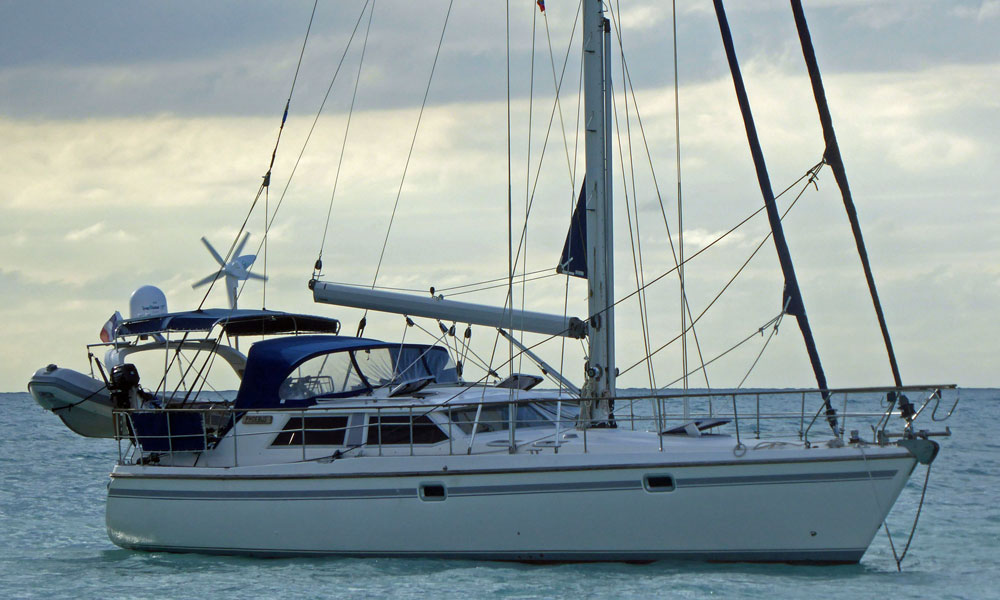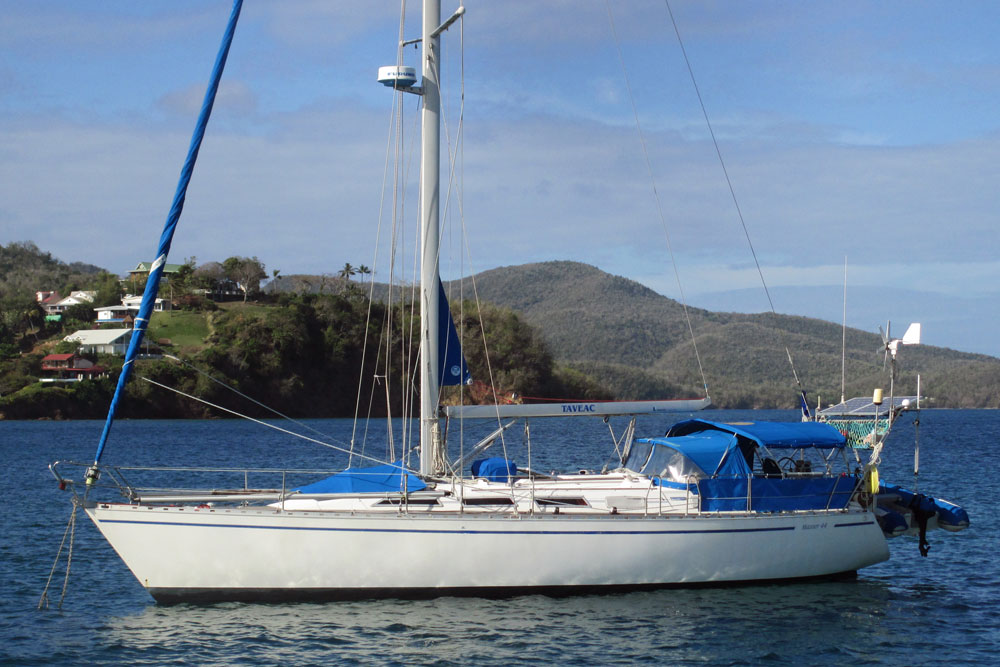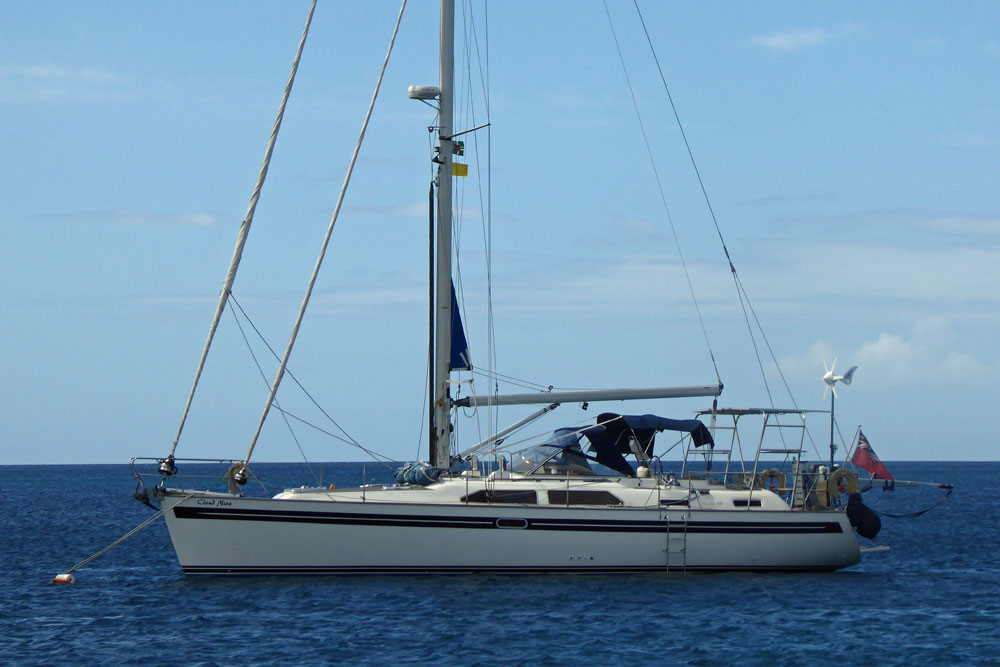- Home
- Cruising Yachts 40' to 45'
- Moody 425
The Moody 425 Sailboat
Specs & Key Performance Indicators
The Moody 425, a centre-cockpit cruiser, was designed by Bill Dixon and built in the UK by Marine Projects Ltd. It one of the most popular models in Moody’s range of family cruisers, with over 100 boats produced.
Published Specification for the Moody 425
Underwater Profile: Fin keel with skeg-hung rudder
Hull Material: GRP
Length Overall: 41' 8" (12.70 m)
Waterline Length: 34' 3" (10.43 m)
Beam: 13' 4" (4.10 m)
Draft: 6' 0" (1.83 m)
Rig Type: Masthead sloop
Displacement: 21,220 lb (9,625 kg)
Designer: Bill Dixon
Builder: Marine Projects (UK)
Year First Built: 1988
Year Last Built: 1991
Number Built: 116
Owners Association: Moody Owners Association
Read more about the current range of Moody Yachts...
Published Design Ratios for the Moody 425
1. Sail Area/Displacement Ratio: 16.4
2. Ballast/Displacement Ratio: 40.0
3. Displacement/Length Ratio: 236
4. Comfort Ratio: 28.6
5. Capsize Screening Formula: 1.9
Summary Analysis of the Design Ratios for the Moody 425
The Moody 425 sailboat, given the provided design ratios, would theoretically have the following sailing characteristics:
- Sail Area/Displacement Ratio (16.4): This ratio is within the range of 16 to 20, indicating that the Moody 425 has reasonably good performance. It suggests that the boat is neither underpowered nor extremely high performing, but should handle well under various conditions.
- Ballast/Displacement Ratio (40.0): A ratio of 40 or more suggests a stiffer, more powerful boat that can better stand up to the wind. However, this ratio doesn't account for the location of the ballast. If the ballast is located in a shallow draft keel, the boat will be less stiff than if the ballast is in a bulb at the foot of the keel.
- Displacement/Length Ratio (236): This falls within the range of moderate displacement (200-275), indicating that the Moody 425 is neither a light nor heavy boat. It should have a good balance of stability and speed, but it will require a reasonable amount of sail area to reach its design hull speed.
- Comfort Ratio (28.6): This ratio falls within the range associated with a coastal cruiser (20 to 30). It suggests that the Moody 425 should provide a comfortable ride in most coastal cruising conditions. However, it may not be as comfortable in more challenging bluewater conditions.
- Capsize Screening Formula (1.9): A value below 2.0 suggests that the Moody 425 has blue water capability, meaning it should be capable of handling ocean passages.
It's important to note that these ratios are theoretical and based on the boat's design specifications. They don't take into account other factors that can influence a boat's performance and comfort, such as the skill of the crew, the condition of the boat, or the specifics of its construction.
As for the limitations of these ratios, the Ballast/Displacement Ratio, as mentioned, doesn't consider the location of the ballast. A boat with a high Ballast/Displacement Ratio but a shallow draft keel may not be as stiff or stable as the ratio suggests.
Ted Brewer's Comfort Ratio does favor heavy displacement, narrow-beamed vessels with long overhangs. Modern designs often feature light displacement and beamy hulls with plumb bows, which may not score well on the Comfort Ratio but can still offer bluewater capability. These boats may also offer other advantages, such as increased interior space and potentially faster speeds. So while the Comfort Ratio can provide some insight into a boat's likely motion comfort, it doesn't tell the whole story.
It's always best to consider these ratios as part of a bigger picture when assessing a boat's potential performance and comfort.
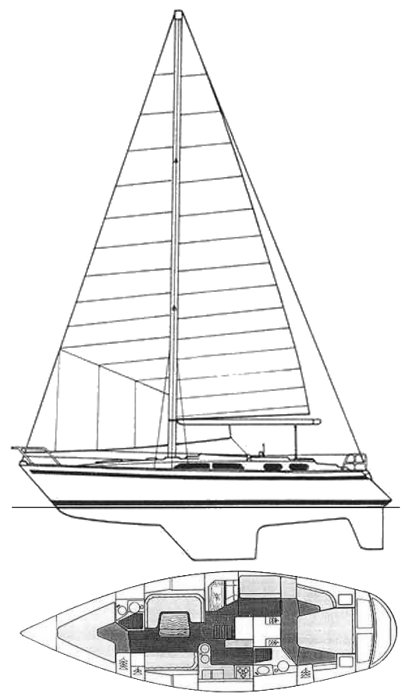 Moody 425 Sail Plan & Accommodation Layout
Moody 425 Sail Plan & Accommodation LayoutThe Moody 425 is a direct development of the Moody 422. The main differences are the en-suite heads to the Aft cabin, which can also be accessed from the Galley thus giving two accesses to the Aft cabin. Inmast furling mainsail and furling headsail were standard
Accommodation
One of the main attractions of the Moody 425 is its generous accommodation layout that can sleep up to eight people. The boat has three separate cabins, two heads, a large saloon, a navigation station and a galley. The interior is finished in teak woodwork and blue upholstery, creating a warm and cozy atmosphere.
The master cabin is located in the stern of the boat, and has a centerline double berth, two hanging lockers, two drawers, and several shelves. It also has an en-suite head with a shower, a sink, and a marine toilet. The master cabin can be accessed from the cockpit or from the saloon.
The forward cabin has a V-shaped double berth, a hanging locker, two drawers, and several shelves. It also has an access door to the forward head, which is shared with the saloon. The forward head has a shower, a sink, and a marine toilet.
The third cabin is located on the starboard side of the boat, next to the navigation station. It has two single bunk beds, a hanging locker, and some storage space. It is ideal for children or guests.
The saloon is spacious and bright, with four large windows and four opening hatches. It has a U-shaped settee on the starboard side that can seat six people around a folding table. The table can also be lowered to create an extra double berth. On the starboard side, there is another settee that can be used as a single berth.
The navigation station is located on the starboard side of the saloon, and has a large chart table with storage space underneath and an instrument panel.
The galley is located on the port side of the saloon. It has an L-shaped counter with plenty of work space and storage space. It also has a double stainless steel sink, a three-burner gas stove with oven, a top-loading refrigerator, and a front-loading freezer.
Hull and Deck
The Moody 425 has a solid fiberglass hull that is reinforced with stringers and bulkheads. The hull shape is round-bilged with moderate overhangs at both ends.
The deck is also made of fiberglass with balsa core for stiffness and insulation. The deck is molded in one piece with an integral toe rail and raised bulwarks for safety, and is wide and flat, with plenty of handrails and cleats. The anchor locker is located at the bow, with an electric windlass and a bow roller. The boat also has a sugar scoop transom that makes boarding and swimming easier.
The Moody 425 has a spacious cockpit that can accommodate six people comfortably. The cockpit also has a large locker, a folding table, and an access hatch to the aft cabin.
This article was written with the assistance of Gemini, a large language model developed by Google. Gemini was used to gather information, summarize research findings, and provide suggestions for the content and structure of the article.
Other sailboats in the Moody range include:
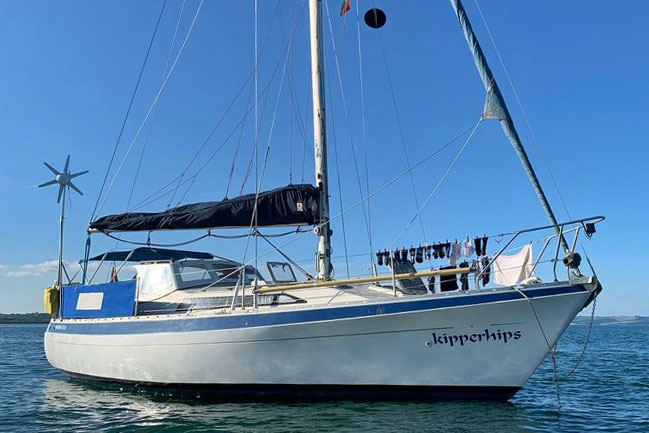 The Moody 33S
The Moody 33SRecent Articles
-
Planning Your Sailboat Liveaboard Lifestyle: An Ocean Sailor's Guide
Dec 06, 25 05:18 AM
Seasoned sailors share their methodical risk analysis for planning a secure Sailboat Liveaboard Lifestyle, covering financial, property, and relationship risks. -
Marine Cabin Heaters: The Expert’s Guide to Comfort & Safety at Sea
Dec 05, 25 06:52 AM
Choose the best Marine Cabin Heaters for your vessel. Expert advice on diesel, paraffin, and hot water systems for year-round cruising comfort. -
Marine Water Heating Systems: Free Hot Water from Your Boat's Engine
Dec 03, 25 05:06 PM
Tap into your engine's heat to get free hot water on board. An experienced ocean sailor's guide to marine water heating systems, calorifiers & safety.
